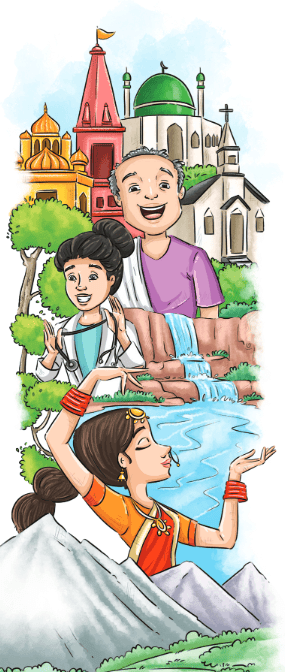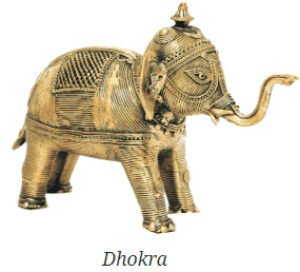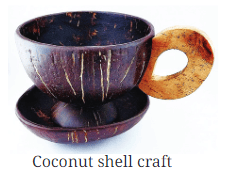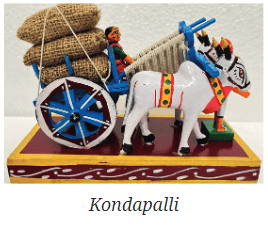Detailed Summary: Hamara Bharat—Incredible India! | Chapter Notes For Class 6 PDF Download
| Table of contents |

|
| Key Points of the Story |

|
| Detailed Summary |

|
| Theme/ Message |

|
| Difficult Words |

|
Key Points of the Story
- Bharat, also known as India, is famous around the world for its wise and brave people.
- The country has a rich and diverse culture that attracts many travellers from ancient times to the present.
- People in Bharat live together peacefully, showing the beauty of unity in diversity.
- Bharat is filled with nature, including rivers, lakes, high mountains, and green forests that are home to many animals and plants.
- All these elements contribute to the prosperity of Bharat and its respect around the globe.
- The story begins in a big hall where the teacher asks students if they are ready to meet friends from all over the country.
- The students respond enthusiastically, excited about the program called "Ek Bharat, Shreshtha Bharat."
- The program promotes unity among different states of India.
- Children from various regions talk about their traditional arts, like Aipan from Uttarakhand, Dhokra from Odisha, coconut shell crafts from Kerala, and Kondapalli toys from Andhra Pradesh.
- Each child describes their regional arts and crafts, emphasizing the creativity, skills, and cultural significance behind it.
- These crafts represent the rich heritage of Bharat and showcase the artistic talents of its people.
- The chapter highlights the importance of knowing and appreciating the diverse cultures within India, fostering a sense of unity among its citizens.

Detailed Summary
In the beautiful land of Bharat, also known as India, people are proud of their wise and brave history. Bharat has a rich culture that has attracted many visitors from all around the world for a very long time. The country is filled with different kinds of people, languages, and traditions, which makes it a special place. The people here live together in harmony, showing that they can be different yet united. Bharat is blessed with many rivers, lakes, and tall mountains, and its green forests are home to various plants, animals, and birds. All these natural wonders help Bharat survive and gain respect from other countries. The people of Bharat work hard to make sure that this beautiful land continues to grow and prosper.
Part 1:
One day, in a big hall, a teacher enthusiasitically asked the students if they were ready to meet their friends from all over the country. The students cheered loudly. The teacher wanted to know why they were gathered there. The students shouted together, "Ek Bharat, Shreshtha Bharat!" This phrase means "One India, Great India." The teacher encouraged the students to raise their hands and share what this program meant to them. Excitedly, many hands shot up in the air. The teacher chose Renu, a bright student. With a big smile, she explained that it was about knowing that we all belonged to one nation and this bond that we share makes our country the most wonderful in the world. The teacher was pleased with her answer, and the other students clapped for her. Just then, Bala pointed at the screen and exclaimed that the video had started.
Part 2:

On the screen, there were small boxes, and each box showed a smiling child from a different part of Bharat. Each child had something special to share about their culture and traditions. The first child introduced herself as Aakansha from Uttarakhand. She said, "I want to tell you about Aipan, our folk art." Aakansha explained that Aipan is a beautiful art form made with a paste of white rice flour on red walls. Families create these designs during festivals and special occasions. The art is usually made by the women in the family and features lovely patterns inspired by nature and cultural traditions.
Next, another child named Priyaranjan from Odisha spoke. He talked about a very old craft called Dhokra, which has been practiced for 4000 years. Priyaranjan explained how they start by making a figure out of clay. After drying it, they cover it with wax and carve fine details into the wax. Then they cover the figure with clay and put it in the fire. The heat melts the wax, which comes out of small holes, leaving a space. They then melt brass scrap and pour it into the empty space, creating a beautiful metal figure. Finally, they remove the outer clay layer and finish the metal piece.
Then, a girl named Chitra from Kerala took her turn. She talked about coconut shell craft. Chitra explained that they start by cleaning the inside and outside of a coconut shell. After that, they smooth it out with sandpaper or a machine. They give it a shape and make it stable by adding a base. Finally, they polish it to make it shiny. Chitra told her friends that they create many beautiful things like bowls and jewelry from coconut shells, which are good for the environment because they are biodegradable.
Another child, Balamurali from Andhra Pradesh, shared his experience with making toys. He talked about the toy-making tradition in his village, Kondapalli, which is about 400 years old. Balamurali explained that they use soft wood from nearby hills to create the toys. First, they carve each part of the toy separately. Then, they use a special paste made from tamarind seed powder and sawdust to join the pieces together. After that, they add details to the toys and finish them. Finally, they use oil, watercolors, or vegetable dyes to paint the toys. The toys are often inspired by folk stories and rural life.
As the video continued, it showed more children from different parts of Bharat sharing their unique crafts and traditions. Each story highlighted the rich diversity of the country and how every region has something special to offer. The students in the hall listened attentively, learning about the various cultures that make up Bharat.
Through these stories, the students are urged to understand the importance of preserving their cultural heritage. It's important to realise that even though we might come from different backgrounds, we all share a common love for their country.
Theme/ Message
Bharat, as country is proud of being a nation with so many cultures, housing various forms of arts and crafts. Protecting and promoting these gives us a unique sense of identity.
Theme
The chapter talks about how India is a very special and unique country because of its many different cultures, languages, and traditions. People from different backgrounds live together in harmony, making India a land of unity in diversity. The chapter also describes India’s beautiful landscapes, historical places, and rich heritage, showing how the country is both modern and deeply connected to its past. It teaches us to respect and appreciate the many traditions that make India colorful and vibrant.Message
India is a country filled with different customs, languages, and traditions, and this diversity makes it strong and beautiful. Even though people may follow different traditions, they live together peacefully and respect each other. The chapter teaches us that we should be proud of our country’s rich heritage and work together to keep it united. It also reminds us to love and take care of our land, its history, and its people so that India remains a wonderful place for everyone.Difficult Words
- Prosperity: The state of being successful and having a lot of wealth or good fortune.
- Diversity: The state of being different or varied; having different cultures, ideas, or people.
- Unity: The state of being one; coming together as a whole.
- Cultural: Related to the ideas, customs, and social behavior of a particular people or society.
- Heritage: The traditions, achievements, and beliefs that are part of the history of a group or nation.
- Artisans: Skilled workers who make things by hand, often using traditional methods.
- Craftsmanship: The skill involved in making things by hand with great care and attention to detail.
- Folk Art: Traditional art created by ordinary people, often reflecting their culture and customs.
- Exhibit: To show or display something to others, often in a formal setting.
- Tradition: A custom or belief that is passed down from generation to generation.
- Emphasize: To give special importance or prominence to something in speaking or writing.
- Significance: The quality of being worthy of attention; importance.
- Observation: The action or process of watching something carefully to gain information.
- Mathematical: Related to mathematics, often involving numbers and calculations.
- Biodegradable: Capable of being decomposed by bacteria or other living organisms.
FAQs on Detailed Summary: Hamara Bharat—Incredible India! - Chapter Notes For Class 6
| 1. What are the key attractions highlighted in "Hamara Bharat—Incredible India!"? |  |
| 2. How does the article portray the unity in diversity of India? |  |
| 3. What themes does "Hamara Bharat—Incredible India!" convey? |  |
| 4. What are some difficult words found in the article, and what do they mean? |  |
| 5. How can readers connect with the message of "Hamara Bharat—Incredible India!"? |  |
















